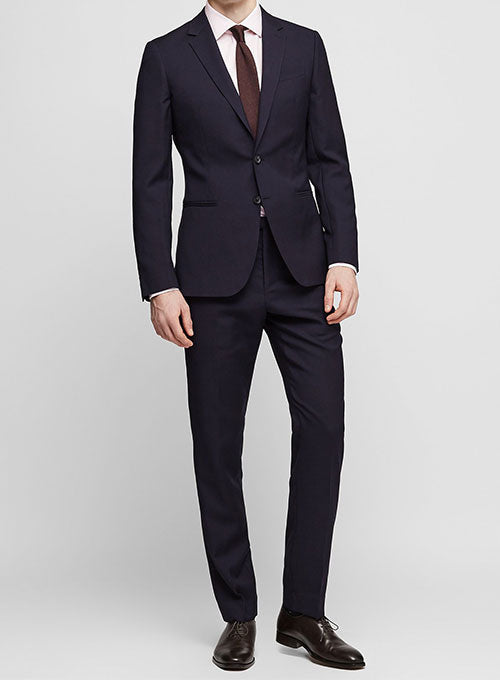Tailored Suits Perth: Boost Your Style with Custom Suits
Tailored Suits Perth: Boost Your Style with Custom Suits
Blog Article
Understanding the Tailoring Process: From Material Choice to Last Suitable for the Perfect Wardrobe
The tailoring procedure is an intricate interplay of art and science, starting with the critical choice of material selection and finishing in the specific modifications of final installations. Each material type brings unique top qualities that influence not just the visual charm but additionally the garment's durability and suitability for various events.
Importance of Textile Choice
Selecting the best textile is vital in the tailoring procedure, as it directly influences the convenience, sturdiness, and overall visual of the final garment. The choice of fabric establishes the foundation for the garment's efficiency, performance, and design. Different textiles possess one-of-a-kind residential properties, such as breathability, stretch, and weight, which can considerably influence exactly how the garment drapes and fits the body.

A tailored piece made from an appropriate textile not just showcases craftsmanship however also elevates the wearer's self-confidence. Subsequently, understanding the subtleties of material selection is paramount for any customizing venture. It makes sure that the end product not just meets the visual wishes of the client however also straightens with practical requirements, therefore accomplishing an unified equilibrium between kind and function in the tailored closet.
Kinds Of Fabrics and Their Usages
Comprehending the different kinds of fabrics offered is vital for making notified decisions throughout the tailoring procedure. Each material has special characteristics that determine its viability for particular garments and celebrations.
Its adaptability permits it to be customized into whatever from t shirts to dresses. Its natural elasticity assists garments keep form over time.
Silk exhibits high-end and is light-weight, making it excellent for eveningwear and fragile blouses; however, it needs cautious handling as a result of its delicacy. Bed linen, with its textured finish, is a prominent option for cozy environments, supplying a crisp and airy feel, but it wrinkles quickly, which may impact the garment's appearance.
Artificial fabrics, such as polyester and nylon, offer resilience and resistance to wrinkles, making them appropriate for daily wear and energetic clothes. Comprehending these textile kinds and their homes enables much better decision-making, making sure that each customized item not just fits well yet additionally straightens with the designated function and event.
The Tailoring Methods Discussed
The art of tailoring relies on a selection of strategies that change material into well-fitted garments. Central to this process is pattern drafting, where a dressmaker produces themes based on the client's dimensions and preferred style. This initial action makes certain that the garment will certainly fit the wearer correctly before any kind of cutting occurs.
As soon as patterns are developed, cutting techniques enter into play. Accuracy is critical as errors can bring about misfitting garments. Tailors commonly use various reducing methods, such as single-layer reducing for complex designs and multiple-layer reducing for effectiveness on basic patterns.
Basting is one more important strategy, enabling tailors to momentarily stitch textile assemble for a preliminary installation (tailored suits perth). This approach provides the possibility to evaluate the drape and total silhouette prior to final sewing
Seaming techniques, consisting of flat-felled joints and French seams, boost the garment's sturdiness and visual appeal. Tailors likewise employ methods such as interfacing and extra padding to offer framework and form to particular locations, like collars and shoulders.
Lastly, completing strategies, including hemming and edge ending up, ensure the garment's durability while giving a polished look. With each other, these methods develop the foundation of reliable customizing, leading to elegant, custom-fit clothing.

Suitable Changes and Factors To Consider
After the first customizing methods have been used and the garment is built, suitable modifications become paramount to attaining the best fit. These modifications address numerous elements of the garment, ensuring it contours to the user's body shape and enhances general appearance.

The surge of pants is an additional critical factor; it should sit conveniently above the hips without causing discomfort, permitting ease of movement. Hemming sizes for both trousers and skirts need to mirror the check out here user's favored design while appreciating proportions.
Furthermore, attention should be provided to the back of the garment, ensuring that there are no More hints undesirable pulls or excess textile - tailor suits perth. Each adjustment needs to be diligently taken into consideration, as even minor modifications can substantially affect the overall fit and aesthetic of the tailored piece, ultimately leading to a wardrobe that radiates confidence and class
Maintaining Your Tailored Attire
Appropriate upkeep of tailored garments is important to maintaining their fit and appearance over time. To make certain durability, regular cleansing is critical. Constantly comply with the care tag instructions, which might recommend completely dry cleaning for fragile materials or machine cleaning for even more long lasting materials. Prevent regular laundering, as this can use down the textile and change the garment's form.
Storage is similarly important; use cushioned wall mounts for jackets and layers to keep shoulder structure, and store pants folded up nicely or hung to avoid creasing. Secure garments from straight sunlight, which can fade shades and damages fibers.
Additionally, periodic evaluations for minor repair services can stop bigger problems. Examine for loosened switches, tearing seams, or indications of moth damage, attending to these issues immediately to preserve the garment's stability.
Finally, think about seasonal rotation. Wearing customized items in small amounts enables materials to recover, extending their lifespan. By implementing these upkeep approaches, you can make certain that your customized garments stay click for more as pristine as the day you first used them, improving your optimal wardrobe for years ahead.
Verdict
The tailoring procedure, encompassing material selection, competent methods, and exact suitable modifications, plays a vital function in producing garments that improve both comfort and style. Recognizing the relevance of upkeep prolongs the life of tailored garments, solidifying their value in a well-curated closet.
Report this page